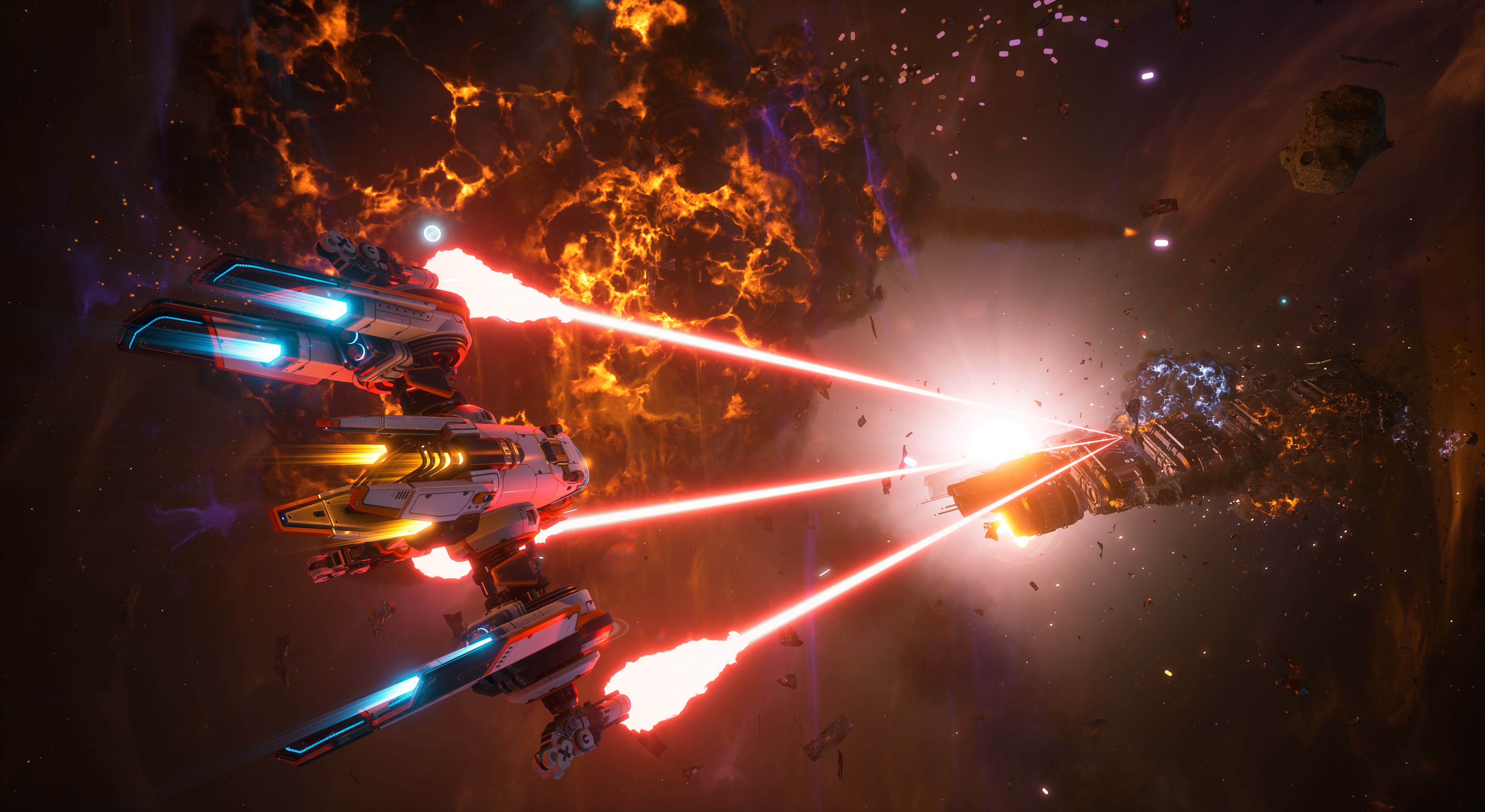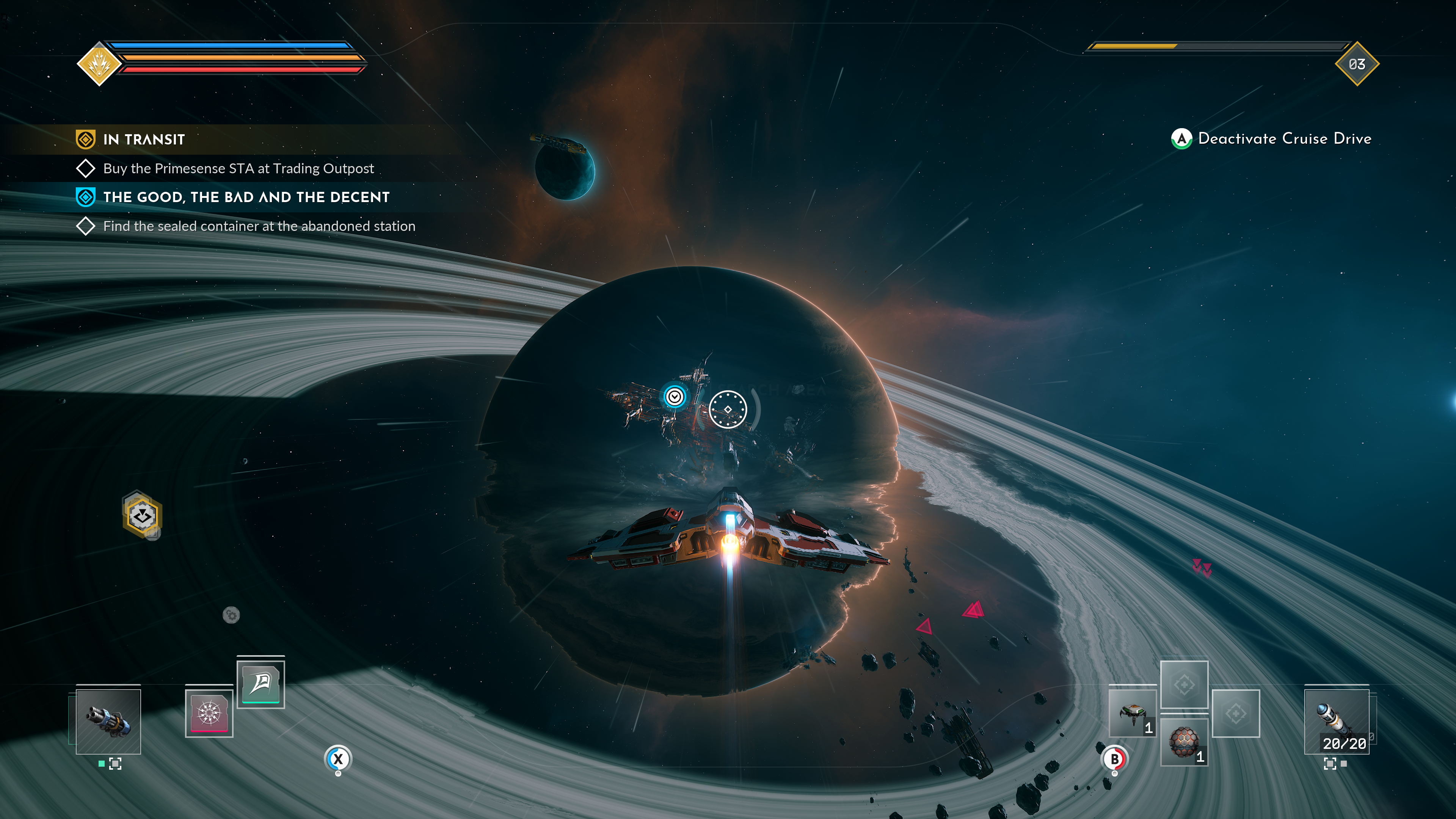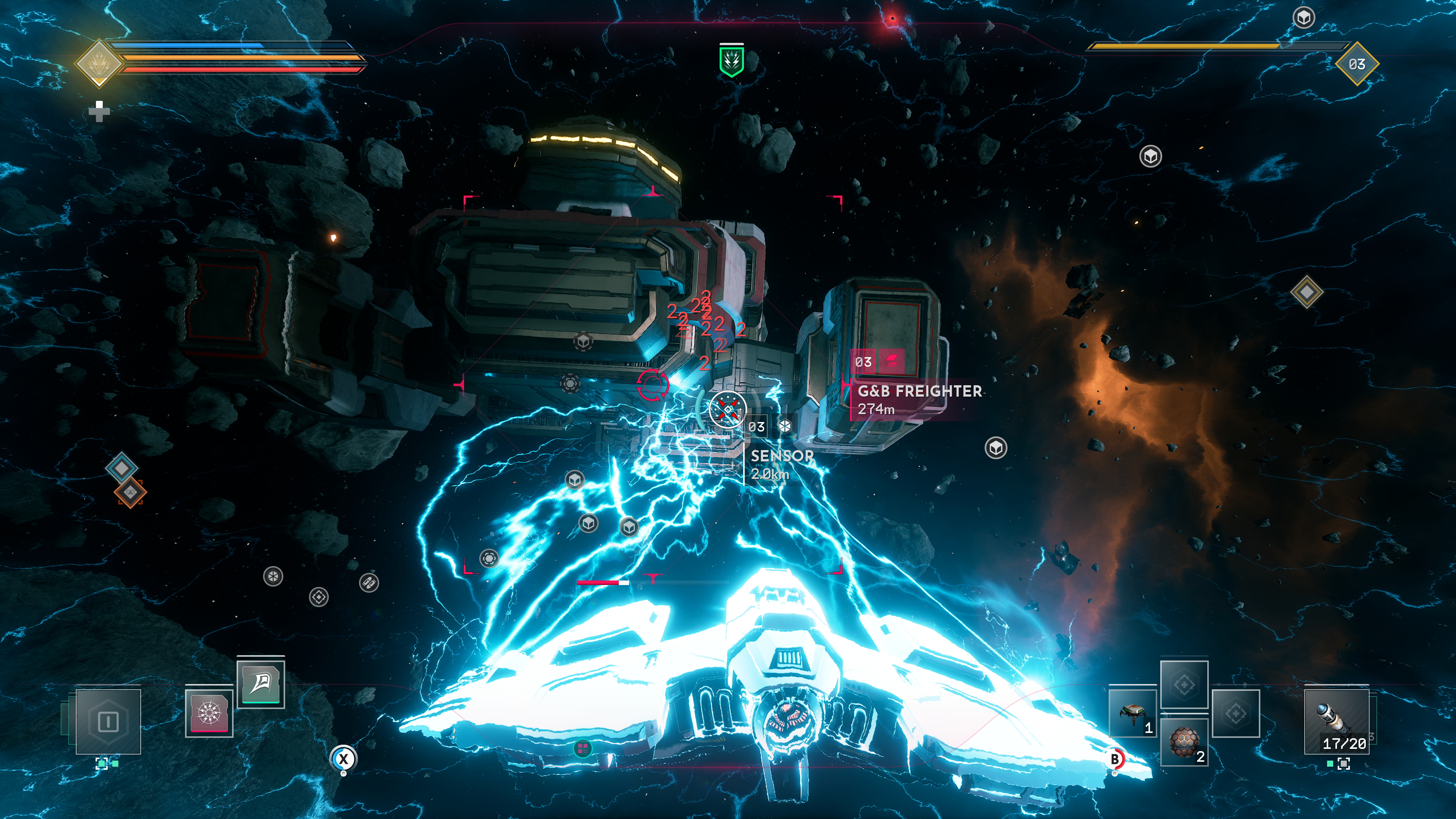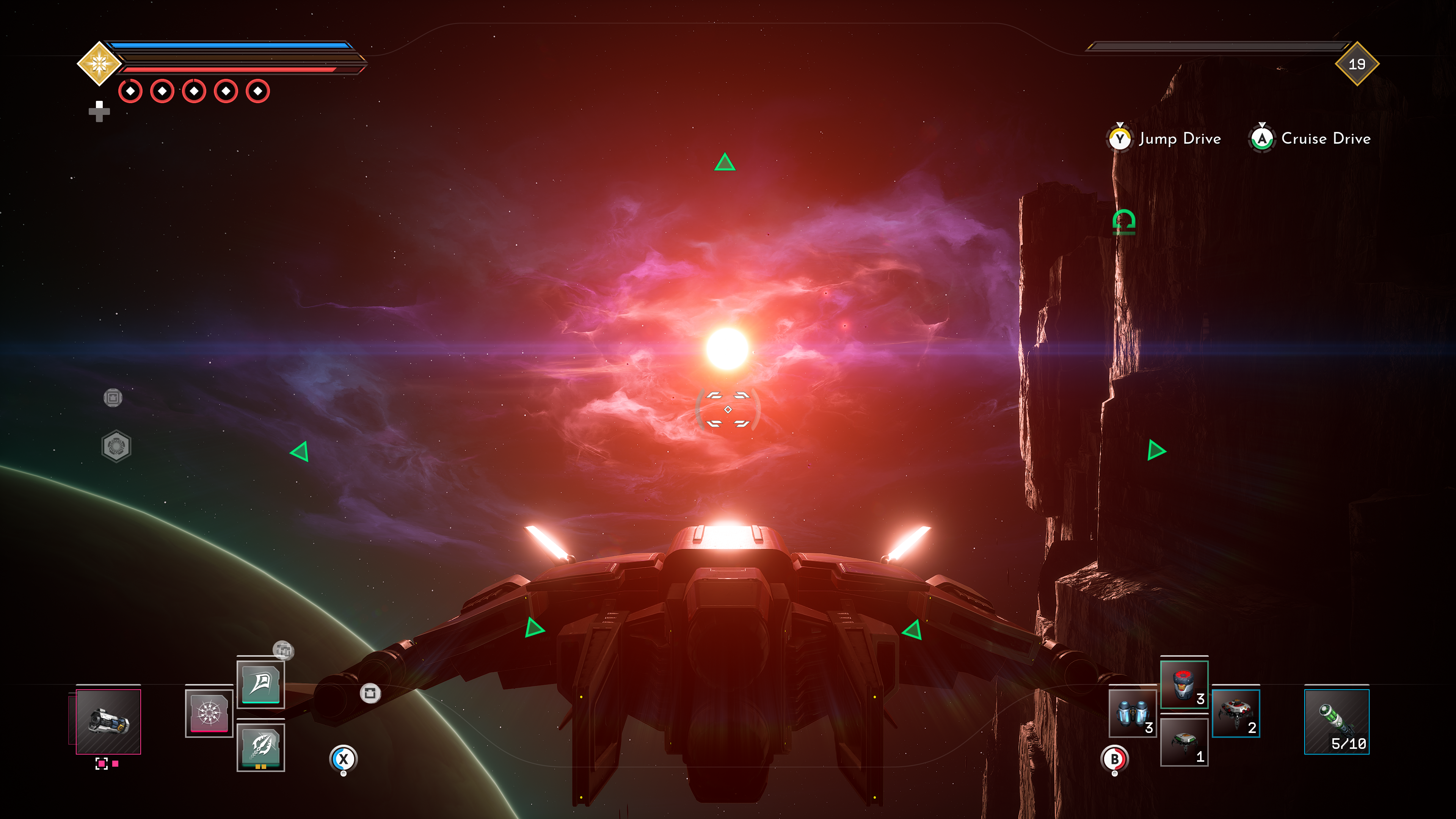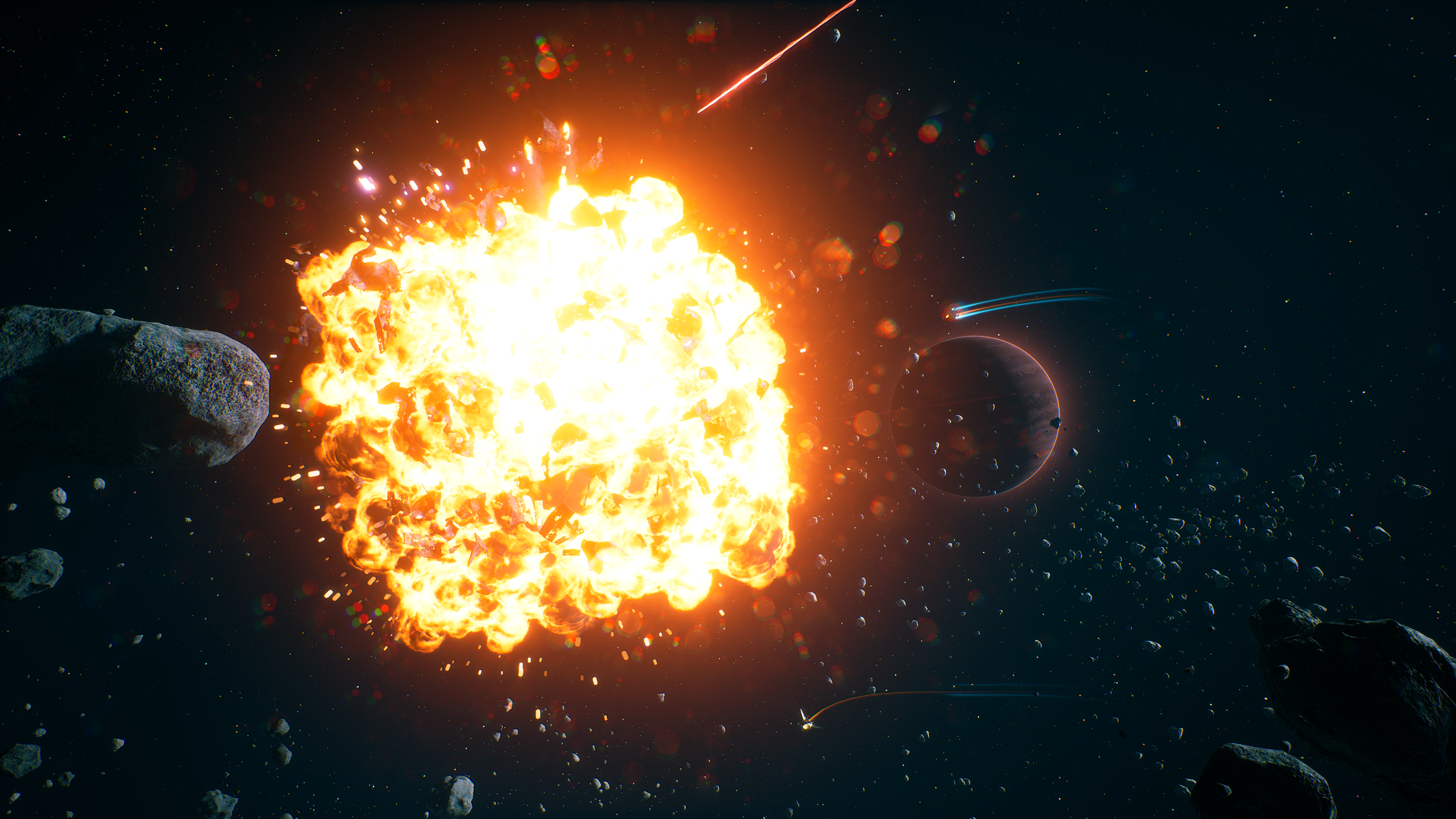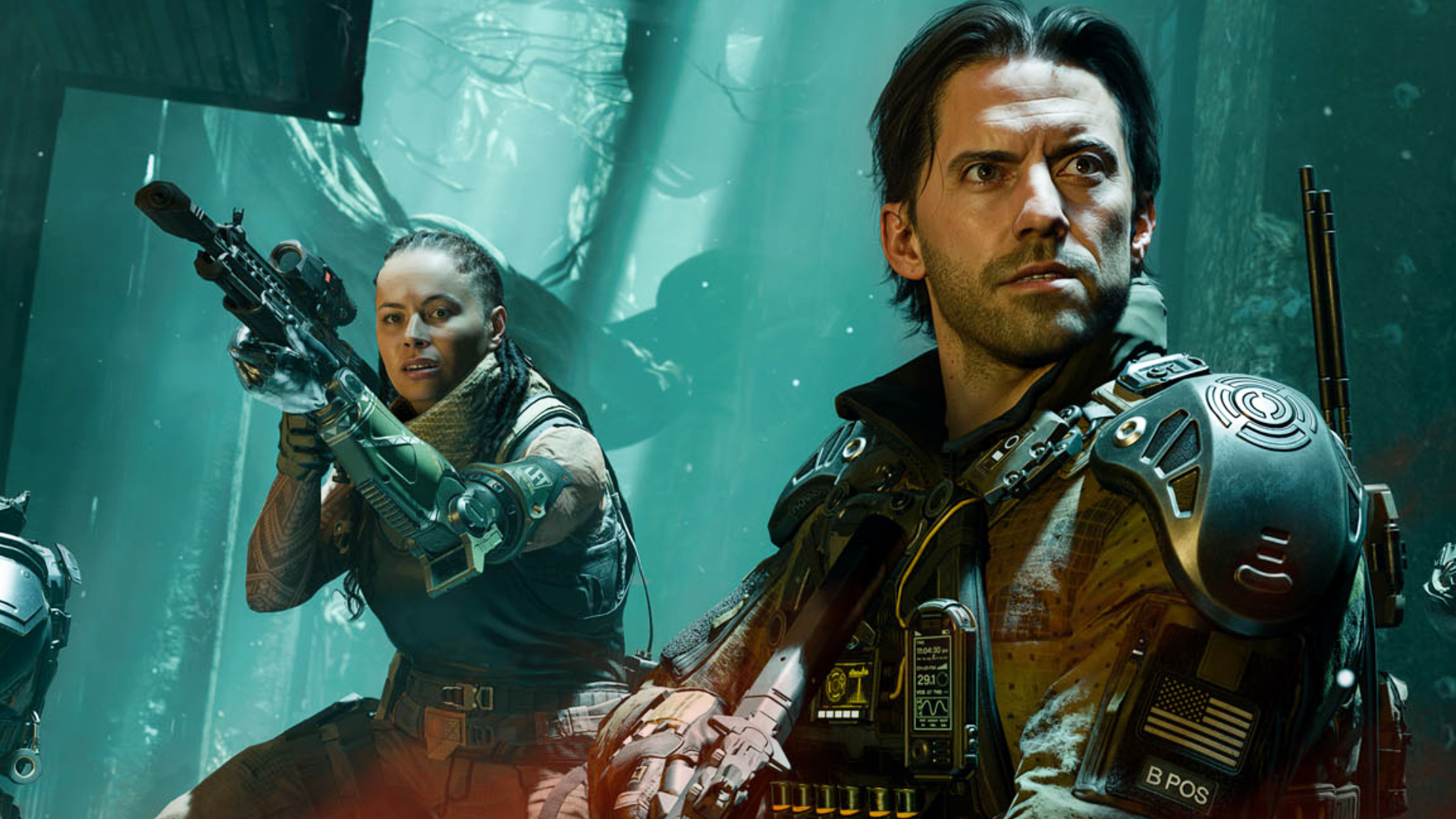Our Verdict
Shooting, looting and RPGing in space has rarely been this good.
PC Gamer's got your back
What is it? A third-person looter-shooter RPG in space
Expect to pay: £45/$50
Developer: Rockfish Games
Publisher: Rockfish Games
Reviewed on: AMD Threadripper 2950X, 64GB RAM, GeForce RTX 3080
Multiplayer? No
Link: Official site
The fact that 2003's Freelancer never got a sequel is one of the greatest travesties in PC gaming. Digital Anvil's third-person space shooter plonked you into a galaxy with a linear storyline but enough freedom to trade and fight as it suited you. PC Gamer gave it 90%, calling it an "expertly crafted space adventure" and "one of the best examples of this genre we've ever seen". Everspace 2 is not Freelancer. It's better.
Rockfish's space sim is the same sort of third-person open-world interplanetary adventure. It's Diablo in space; an RPG in which you play a conglomeration of engines and lasers as much as its pilot. It's different from its predecessor, 2017's Everspace, in one crucial way: the roguelike elements are gone. Death was once inevitable, baked into the game so that credits earned during a run could be used to buy perks and improve your character for the next one. Not so in Everspace 2, where death merely brings up the reload checkpoint screen and a chance to try again.
The original Everspace game loop was apparently not as popular as it could have been, so German developer Rockfish has reverted to type. The studio's fish-favouring founders were also behind Fishlabs, which made the Galaxy on Fire series (third-person space shooters, in case there was any doubt). Some of the best games ever to feature a protagonist named Keith, the trilogy included travel between star systems, combat with pirates, trading routes between planets and space stations, and mysterious portals.
With Everspace 2, then, it would be tempting to make the old joke about Rockfish having made the same game again, but that wouldn't be fair given the sheer amount of effort and artistry that's gone into creating this latest instalment. Following a stint in early access it's launched in a very polished state and can be a ridiculously good looking game, all floating rocks and wreckage, the trails left by other ships visible through clouds of dust that drift between objects. Minefields glow red in the darkness, radiation fields are speckled with golden particles you'll want to get close to before backing away swiftly. Stars cause explosions of bloom and flare when you turn to face them, while planets have concentric ring systems and automated installations are all blinking lights and chunky metal.
There's no ray-tracing, as screen-space global illumination is apparently good enough, and an RTX 3080 had no problems keeping the game purring away in 4K. DLSS 2.0 is supported, too, as are various flight sticks and HOTAS controllers, though mouse and keyboard or a gamepad work too. Its system requirements are relatively mild, though Steam Deck optimisation wasn't part of the Kickstarter and is therefore a lower priority.
Free space
Space is absolutely full of loot. Shoot down a pirate, open a chest (though since we're in space they're cargo containers) or come across something randomly floating in the void while roaming around, perhaps the remains of a transport ship that exploded long ago, and you'll get some rewards. It might just be scrap metal or trade goods, but it could be a new gun or a missile refill. Maybe it's something absolutely terrific you've never seen before.
New ships can be bought from bases with ship dealers, but you'll need a lot of credits. Most ship upgrades come in the form of new guns, secondary weapons such as homing missiles, and special attacks like a static electricity surge that can knock out nearby vessels. These need to be charged before you can use them, like a Street Fighter super, and there's a recharging shield (some only charge when you boost); armour plating; nanobots to make repairs; damage limitation devices; and modifications for your weapons so they do more damage, disable shields or earn you more XP from a kill.
Keep up to date with the most important stories and the best deals, as picked by the PC Gamer team.
Space is absolutely full of loot.
It's a lot to keep track of, and if you're burning through missions and changing your weapons frequently, the short time delay while a new module is winched into place becomes something to watch out for as it leaves you unable to fire. These delays don't affect the pace of the game as much as they make changing weapons something you'll plan rather than doing on the fly.
XP feeds into your level, which determines the strength of the enemies you face as well as dictating the gear you can use. So when you find something new to strap to your ship, you'll have to compare its prerequisites to your level and perks, as you might not be able to use it. Or perhaps you can, as investing a little time and resources at the crafting table can remove that level cap, allowing you to bolt on higher-level equipment and come out all guns blazing. The way this ties the crafting system into your progression in a more engaging way than collecting 10 mushrooms for the leader of a guild means it's much less likely to be ignored.
Flight stimulator
Ship handling is distinctly arcadey, with full 3D movement and the ability to precisely jet up and down, which comes in very handy when squeezing through small gaps. Enemies are fast, and combat doesn't become the turning contests seen in Freelancer where you latched onto an opponent's tail and followed it wherever it went until it exploded. Luckily, there's a generous lock on, leading fire indicator, and aim assist (which becomes stronger if you're using a gamepad). Combine this with homing missiles, and it can be hard to miss, though chipping away at a ship's shields while making sure your own recharges, and avoiding incoming fire, is a skill in itself.
It can feel as if the entire galaxy is against you, filled as it is with foes, including bosses and elites. Enemies come in waves of about five, with another batch of targets appearing nearby once you've taken one group down, giving you the option of going after them or not.
Turning off inertial dampening for a more Newtonian approach to propulsion, and moving into first-person view, makes Everspace 2 a more tricky proposition. The cockpit perspective is hamstrung by the need to frequently pick things up with your ship's grabber—a graphically satisfying thing if seen from the chase camera as magnetic field lines fill and distort the screen, but which completely blocks your view from the pilot's seat, making it all but impossible to use.
Colony wars
You don't need to have played the previous game to pick up Everspace 2 and fly off. As Adam Roslin, a clone pilot with the memories and piloting skills of his DNA donor, (who blew up a lot of things in Everspace), you'll find yourself working for a mining company under an assumed name, trying to shoot enough space anemones and defend against enough pirates to earn a ticket out of the DMZ at the edge of human-colonised space. The zone is left over from a war against aliens, and there are plenty of extraterrestrials to discover, much of them based on aquatic life.
You don't need to have played the previous game to pick up Everspace 2 and fly off.
Your ship is a single-seat fighter with some cargo capacity, and the ability to swap out modules and weapons on the fly. You never get out of it, except in the cutscenes which are voiced but rendered in a hand-drawn, stop motion style. It's a bold stylistic choice but one that works, turning what could have been a bunch of potato-faced Mass Effect types with extra stubble into something really artistic and nice to look at. Supporting characters join your home base crew as you progress, bringing engineering and medical expertise in the form of perks you unlock with credits and resources, as well as adding comms chatter.
If you've ever played Elite: Dangerous offline as a bounty hunter, you'll recognise a lot of what's going on here. There are three ways to travel faster than your thrusters can manage, one to be used within systems, one for moving larger distances, and even longer-range jumpgates. When you're zooming along and measuring distances in light-seconds, unknown signals appear to pique your curiosity and drag you off course into a pirate-infested rescue mission or a large ship distressed in a minefield. At least there's an autopilot, and you don't need to time your descent from FTL travel perfectly to avoid overshooting your destination.
Alone in the dark
Everspace 2 is a stubbornly singleplayer game, with no shared universe or even co-op, and this means missions outside the main story can begin to feel a bit samey. You jump into a new area, explore some ruins, avoid mines/radiation, wait until some red dots get closer and shoot them, then complete what you came for and jump out again.
Every system is full of interesting things and generally contains a puzzle, however, and this helps to keep your attention engaged. It may just be moving debris, or slotting power cores into sockets to switch on some mechanism or giant space mining laser. Planetary surfaces contain caverns full of bandits to clear out (like Skyrim without the fire wizards holed up in lonely towers, although perhaps everyone in this game is a fire wizard of sorts) and you'll find something similar inside asteroids, the experience of flying through them very much like being underwater. The 3D movement is extremely useful here, as you squeeze through gaps and jet in circles around pillars of rock chasing another ship.
So, an expertly crafted space adventure? Yes. One of the best examples of this genre we've ever seen? Also yes, with the caveat that it's a style of game that's been sadly under-represented in recent years. The lack of heavy simulation elements and emphasis on combat makes this a game that's perfect for a quick blast as well as longer play sessions, but it's also a satisfying and, thanks to all the side missions, really quite long adventure that'll keep you looting and shooting through space for up to 90 hours.
Shooting, looting and RPGing in space has rarely been this good.

Ian Evenden has been doing this for far too long and should know better. The first issue of PC Gamer he read was probably issue 15, though it's a bit hazy, and there's nothing he doesn't know about tweaking interrupt requests for running Syndicate. He's worked for PC Format, Maximum PC, Edge, Creative Bloq, Gamesmaster, and anyone who'll have him. In his spare time he grows vegetables of prodigious size.
